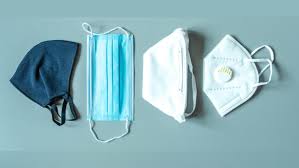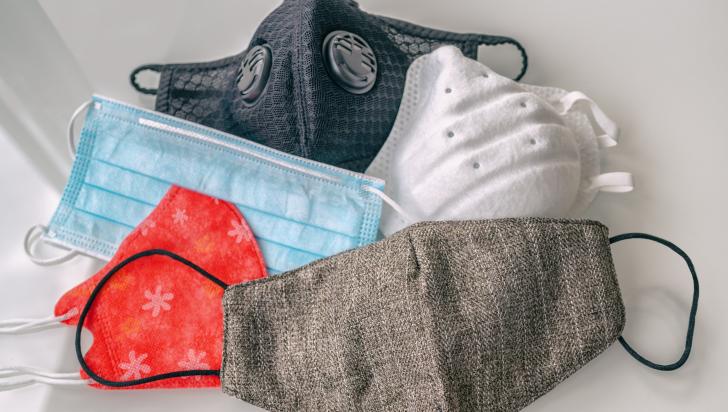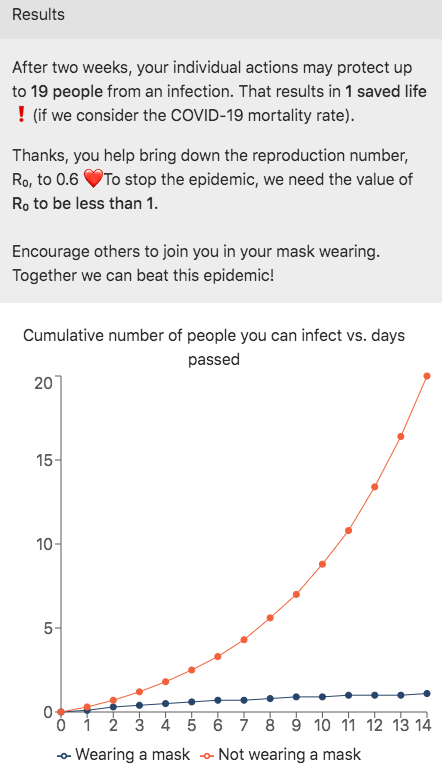Homemade face masks made out of cotton are approximately 20% more efficient at filtering out tiny particles like SARS-CoV-2, the COVID-19 causing virus, compared to silk or flannel. Almost after two weeks of using any of these three fabric masks to cover your nose, you end up preventing 19 to 20 people from contracting the virus.
Two pals in Poland are in the pursuit of ensuring that you are informed of these facts and are determined to distribute this information about facial coverings. And the most accurate way to do this is with the help of a calculator.
Joanna Michalowska is a Ph.D. student at the Poznan University of Medical Sciences, and Dominik Czerniak is a Physics Ph.D. student at the Institute of Nuclear Physics in Krakow. They have made this free calculator hosted on the Omni Calculator, an archive of more than 1290 calculators, to design some mask-wearing variables.

Michalowska told Popular Mechanics, “A lot of people doubt the use of face masks. Many posts are circulating Facebook that wearing a mask is causing various illnesses and diseases, which are not true.”
To create this calculator, the pair went through various recent researches about the virus. One of the studies discusses the successful use of homemade face masks using hybrid materials like cotton.

In Czerniak and Michalowska’s calculator, this is considered in the drop-down menu for mask type. There are options for N-95 respirators, surgical masks, and scarves, too, if you want to see how efficient those coverings filter out small particles.
From there, the other factors include:
Whether or not you wear a mask: This is a yes or no choice, and if you move to “no,” the calculator suggests that, all other variables held constant, your decision could cost up to one life and lead to 20 new infections.
Initial reproduction number R: Pronounced “R-naught,” this is a mathematical term that shows how contagious an infectious disease is. Czernia and Michalowska kept the R to a standard of 2.5, since COVID-19 has an R of roughly 2.4 to 4.0, with 2.5 being the most recent estimate, based on the U.S. Centers for Disease Control and Prevention.
Each person spreads the disease to two to four others, on average, if no other variables are introduced (like quarantining or wearing a mask). For the most accurate results, leave this variable when you try out the calculator.
Percentage of people that wear masks: This is kept at a default of 100 percent, but bearing in mind many people incorrectly wear masks exposing their nose or don’t ensure a proper seal, you may want to minimize that number. Also, there’s a vocal minority of people in the U.S. who deny wearing a mask in public. According to a June 2020 poll from Pew Research Center, about 65 percent of respondents said that they always or mostly wear masks inside businesses.

Let’s go through a test situation. I used my personal choices, but feel free to goof around with the calculator on your own as well. I clicked “Yes” for wearing a mask and set the material to cotton, as that’s what most of my homemade face masks are created with. I kept the R at 2.5 but adjusted the percentage of other people who wear a mask down to 65 percent, as in reality, not everyone will put one on.
My results calculate that my individual actions could save up to 19 others from infection and save one life if you consider the COVID-19 mortality rate.
It took Czerniak and Michalowska three days to invent and test out the calculator. Based on the traffic that other Omni Calculators see, the students hope at least 10,000 to 20,000 people will use theirs each day. It’s one tiny way they expect to stop the spread of COVID-19. They say, “Information is everything.”
“If someone clicks on not wearing a mask, the results of the calculator will show that your actions may be the cause of someone’s death,” Michalowska said. But wearing a mask can actually put an end to the pandemic.


